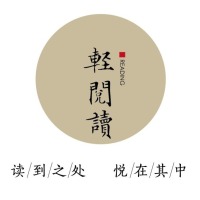Timid? Not These “Furry Heroes”: Cambodia’s Post-War Landmine Detecting Rats

A mine-detecting rat from the humanitarian demining organization APOPO at work in a minefield.
In Cambodia’s vast post-war minefields, a group of extraordinary sniffers, African giant pouched rats, are playing a vital role in mine clearance with their highly sensitive noses. Trained by Belgian non-profit organization APOPO, these rats work alongside traditional mine-detection dogs, bringing safety and hope to local communities.

APOPO deminer Mott Sreymom applies sunscreen to an African giant pouched rat before starting a day of mine detection.

A rat sniffs for landmines in a Cambodian minefield.
APOPO has been conducting mine clearance operations for decades. Today, the giant rats can grow up to 45 centimeters in length and weigh around 1.5 kilograms. As they run across minefields, they stop and scratch the ground to signal the presence of buried TNT, a trained behavior that indicates a possible landmine. In fact, none of the trained rats in the program have ever missed a single mine. “They never miss one, they’re extremely reliable on the job,” said APOPO Cambodia staff member Mott Sreymom.

A rat named Ronin sniffs for landmines in a minefield in Cambodia’s Preah Vihear Province.
Since joining APOPO’s volunteer team in August 2021, a giant rat named Ronin has helped clear 109 landmines and 15 unexploded ordnances in Cambodia’s Preah Vihear Province, setting a new Guinness World Record. At five years old, Ronin works around 12 minutes a day. As his handler Phanny puts it, “He’s not just an asset, he’s a trusted partner.”
Before Ronin, APOPO’s top hero rat was Magawa, who cleared 71 landmines and 38 unexploded ordnances during his career and was awarded the prestigious PDSA Gold Medal.

Since 1992, Cambodia has cleared over 1.1 million landmines and 2.9 million unexploded remnants of war, but as of 2018, approximately 1,970 square kilometers of land remained uncleared. According to 2004 data from the Cambodian Mine Action and Victim Assistance Authority (CMAA), roughly 4,500 square kilometers across all 25 provinces and over 7,000 villages were once affected.
Compared to mine-detection dogs, giant rats have a shorter training cycle and lower costs: about $7,300 per rat, roughly one-third the cost of training a dog. Their lightweight bodies prevent them from triggering landmines, and they can work in hot conditions, though each rat typically works only about 20 minutes a day to maintain safety and efficiency.


A team of mine-detecting rats from the humanitarian demining organization APOPO has been deployed to a minefield to carry out clearance operations.
Thanks to the success of rats like Ronin, confidence in rodent-based mine clearance is growing. Ronin is expected to continue working for another two years before retirement. With continued support, APOPO hopes to eliminate Cambodia’s landmine threat entirely within this century, returning land and safety to its people.














